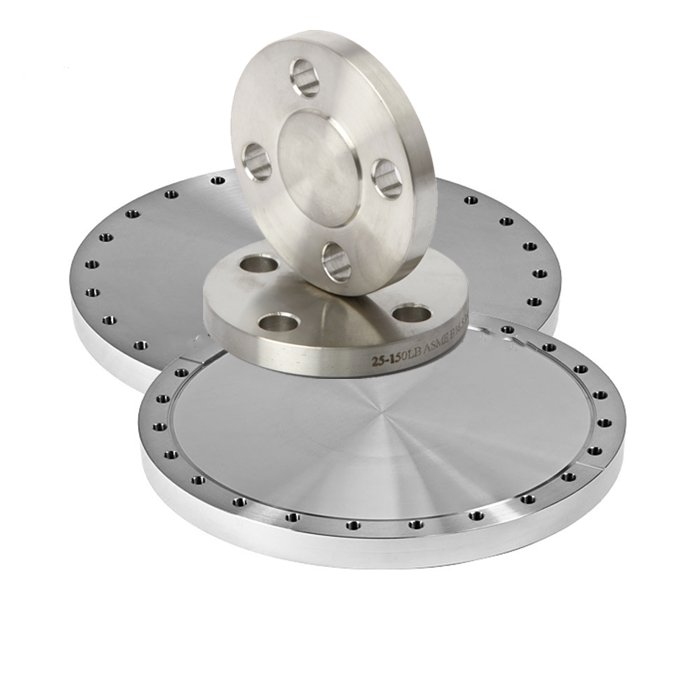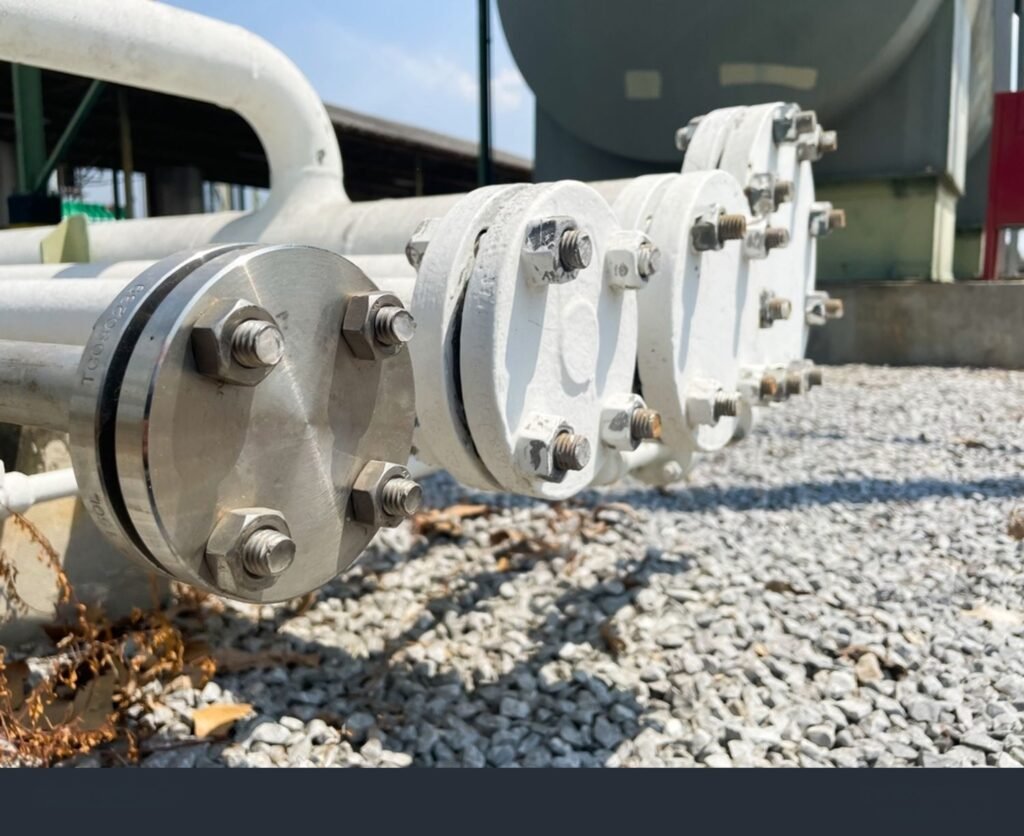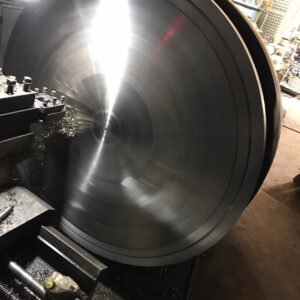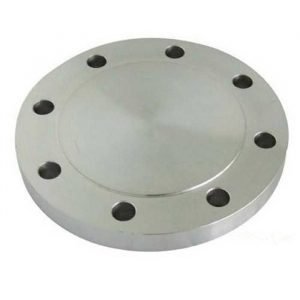What is a blind flange?
A blind flange (also called a ‘closure plate flange’) is installed at the end of a piping system to terminate a pipe. It has no centre hole (bore), so there is no flow through the flange. A blind flange may be used for isolating a pipe, valve, or pressure vessel.

Common types of blind flanges include:
- Figure-8 Blind Flange: This type has a shape resembling the number “8,” where one end is the blind flange and the other contains a saving ring. The saving ring facilitates easier installation and removal. This type is suitable for pipelines requiring regular isolation.
- flat face blind flange: The flat-face variant is completely level across the entire surface.
- raised face blind flange: the raised-face type of flange features a raised circle in the middle that matches the diameter of the pipe to which it will be attached.
- Insert Flange: An insert flange is typically used for one-time operations like pressure testing or purging pipelines. It is easy to install and remove, making it ideal for short-term use.
- Gasket Flange: A gasket flange is similar to an insert flange. It is used to fill gaps between pipes, ensuring a secure fit for the blind flange.
Material Selection for Blind Flanges
Blind flanges are made from various materials to meet different working conditions. Common materials include:
Carbon Steel: Known for its high strength and durability, this material is used in general pipeline systems.
Alloy Steel: Suitable for high-temperature or high-pressure environments, alloy steel offers better corrosion resistance.
Stainless Steel: Ideal for corrosive environments, particularly in chemical and food processing industries.

What Is a Blind Flange Used For?
Whether flat face or raised face, a blind flange is used to temporarily block flow through a pipeline by creating a sealed end. This creates a barrier that prevents gas or liquid from moving any further down the pipeline.
This may be necessary for a variety of reasons. For example, the pipeline may need to be closed for routine maintenance or repairs to one section. Blind flanges are used to isolate this section of the pipe to prevent materials from leaking out and causing potential hazards or loss of production. Another common use case for blind flanges is during pressure testing, when they serve to seal off certain sections of the pipeline to ensure the accuracy of the test and for safety purposes.
Basic Functions of Blind Flanges
The design of a blind flange aims to seal the ends of pipes, preventing any leakage of fluid and ensuring the safety of the pipeline system. It is an effective device for blocking, isolating, pressure testing, and cleaning pipes.
The main functions of a blind flange are as follows.
- Blocking Function: A blind flange seals the end of a pipe to prevent fluid leakage. Similar to end caps, the key difference is that blind flanges are removable, allowing easier future operations.
2.Isolation Function: Blind flanges can isolate fluid in a pipeline. By stopping the flow of fluid, they block pressure or other media, ensuring the system remains stable and safe. - Maintenance and Cleaning Function: During maintenance or cleaning, blind flanges are easy to remove. This allows for cleaning debris or conducting necessary repairs.
Applications of Blind Flanges:
- Pipeline Strength or Leak Testing: Blind flanges are commonly used to seal the ends of pipes during strength or leak tests, preventing medium leakage.
- Connection Between Equipment and Pipeline: Blind flanges seal the equipment’s inlet when connecting equipment to a pipeline, ensuring the system is sealed and isolated.
- Before and After Shutoff Valves: Installed before and after shutoff valves, blind flanges ensure the valves are fully closed, preventing fluid leakage or production disruption.
- Regular Maintenance and Repair: During routine maintenance or repair of pipelines or equipment, blind flanges provide complete isolation, preventing fluid leakage.
- Pressurized and Displacement Gas Pipelines: Blind flanges are used in pressurized pipelines (e.g., nitrogen or compressed air pipelines) to ensure safe isolation after shutoff valves.
- Exhaust, Drainage, and Sampling Pipes: In these systems, blind flanges are installed after valves to ensure proper sealing and isolation, preventing medium leakage.

Find your Blind flange
When looking for a flange, it is important to consider the size of the pipe or conduit you are connecting. The sizes and diameters can vary, so you may need a different size or quality depending on that. Here you will find the flange you are looking for.
Questions? Get in touch
Perhaps you want to know more, have questions, or are curious about the price. For a quote, you can request one online. If you do so on weekdays during office hours, you will receive a quote from us within an hour.
+86-18003119682
info@hb-steel.com



